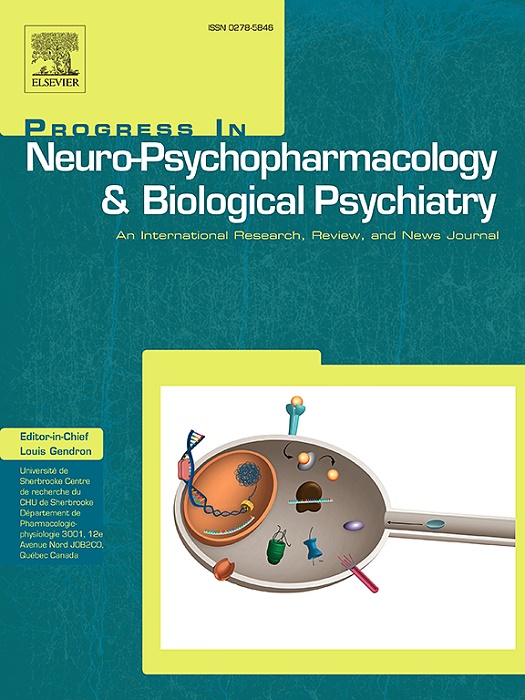Psychedelics in neuroinflammation: Mechanisms and therapeutic potential
IF 5.3
2区 医学
Q1 CLINICAL NEUROLOGY
Progress in Neuro-Psychopharmacology & Biological Psychiatry
Pub Date : 2025-01-31
DOI:10.1016/j.pnpbp.2025.111278
引用次数: 0
Abstract
Neuroinflammation is a critical factor in the pathogenesis of various neurodegenerative and psychiatric disorders, including Alzheimer's disease, Parkinson's disease, and major depressive disorder. Psychedelics, such as psilocybin, lysergic acid diethylamide (LSD), and dimethyltryptamine (DMT), have demonstrated promising therapeutic effects on neuroinflammation, primarily through interactions with serotonin (5-HT) receptors, particularly the 5-HT2A receptor. Activation of these receptors by psychedelics modulates the production of pro-inflammatory cytokines, regulates microglial activity, and shifts the balance between neurotoxic and neuroprotective metabolites. Additionally, psychedelics affect critical signaling pathways, including the nuclear factor kappa-light-chain-enhancer of activated B cells (NF-κB), phosphatidylinositol-3-kinase/protein kinase B (PI3K/Akt), and mechanistic target of rapamycin (mTOR) pathways, promoting neuroplasticity and exerting anti-inflammatory effects. Beyond the serotonergic system, other neurotransmitter systems—including the glutamatergic, dopaminergic, noradrenergic, gamma-aminobutyric acid (GABAergic), and cholinergic systems—also play significant roles in mediating the effects of psychedelics. This review examines the intricate mechanisms by which psychedelics modulate neuroinflammation and underscores their potential as innovative therapeutic agents for treating neuroinflammatory and neuropsychiatric disorders.

求助全文
约1分钟内获得全文
求助全文
来源期刊
CiteScore
12.00
自引率
1.80%
发文量
153
审稿时长
56 days
期刊介绍:
Progress in Neuro-Psychopharmacology & Biological Psychiatry is an international and multidisciplinary journal which aims to ensure the rapid publication of authoritative reviews and research papers dealing with experimental and clinical aspects of neuro-psychopharmacology and biological psychiatry. Issues of the journal are regularly devoted wholly in or in part to a topical subject.
Progress in Neuro-Psychopharmacology & Biological Psychiatry does not publish work on the actions of biological extracts unless the pharmacological active molecular substrate and/or specific receptor binding properties of the extract compounds are elucidated.

 求助内容:
求助内容: 应助结果提醒方式:
应助结果提醒方式:


